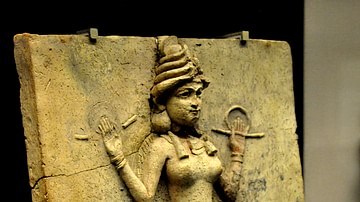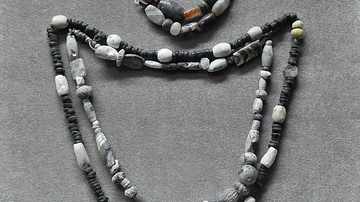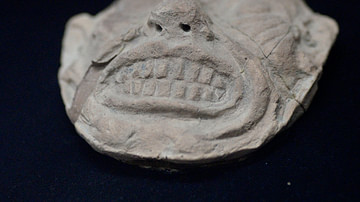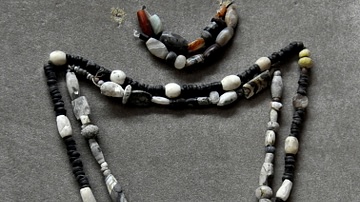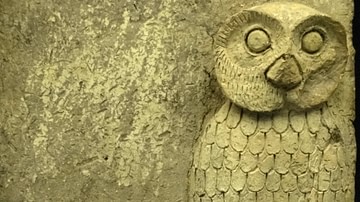Illustration
This large plaque was made of baked straw-tempered clay, modeled in high relief. The figure of the curvaceous naked woman was originally painted red; note the trace of the red color on her left wrist. She wears the horned headdress characteristic of a Mesopotamian deity and holds a rod and ring of justice, also symbols of her divinity. Her long multi-colored wings hang downwards, indicating that she is a goddess of the Underworld. The background was originally painted black, suggesting that she was associated with the night.
The figure could be an aspect of the goddess Ishtar, Mesopotamian goddess of sexual love and war, or Ishtar's sister and rival, the goddess Ereshkigal who ruled over the Underworld, or the demoness Lilitu, known in the Bible as Lilith. The plaque probably stood in a shrine.
Old Babylonian period, 1800-1750 BCE, from southern Iraq (place of excavation is unknown), Mesopotamia. (The British Museum, London).
About the Author
Cite This Work
APA Style
Amin, O. S. M. (2014, September 18). The Queen of The Night Relief. World History Encyclopedia. Retrieved from https://www.worldhistory.org/image/3039/the-queen-of-the-night-relief/
Chicago Style
Amin, Osama Shukir Muhammed. "The Queen of The Night Relief." World History Encyclopedia. Last modified September 18, 2014. https://www.worldhistory.org/image/3039/the-queen-of-the-night-relief/.
MLA Style
Amin, Osama Shukir Muhammed. "The Queen of The Night Relief." World History Encyclopedia. World History Encyclopedia, 18 Sep 2014. Web. 29 Mar 2025.




